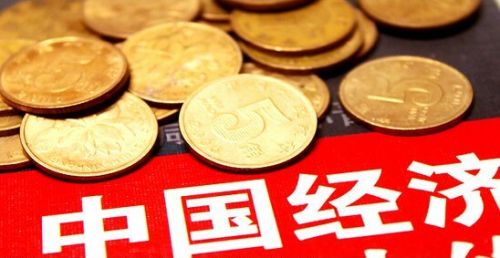
SYDNEY, April 24 (Xinhua) -- Leading Australian economic experts say China's first quarter economic results have driven the global economy to success.
For the first quarter of 2017, China exceeded expectations, recording a 6.9-percent increase in Gross Domestic Product, or GDP.
The result was incredibly positive according to the James Laurenceson, deputy director of the Australia China Relations Institute at the University of Technology, Sydney, who is also a leading economist.
He told Xinhua on Monday that the figures were well above what was expected, and welcomed by the world.
"More importantly though is that it showed that rebalancing is continuing, with most of the growth coming through consumption, and that is exactly what we wanted to see," Laurenceson said.
Official data released last week showed China's economy has grown 6.7 to 7.2 percent for the last 11 quarters, with this quarter being the strongest growth experienced since the July-September quarter in 2015.
Raymond Yeung, chief economist of Greater China at Australia and New Zealand Banking Group (ANZ), believes that not only will China meet its annual 6.5-percent target.
"The past few months have seen the Chinese economy returning to the investment driven model, which works well to stabilize growth despite a lot of global uncertainties," Yeung said.
"Fixed asset investment data soared 9.2 percent year over year in March against market expectations of 8.8 percent."
With China "extraordinarily" accounting for 35 percent of the world's growth, Laurenceson is adamant that China's growth is extremely beneficial and forging a path to economic success, particularly outside of China.
"More Australian goods and more Australian services go to China than other country. That's because incomes in China are growing rapidly, so it's an enormous positive impact to both Australia and the world," Laurenceson said.
Yeung contends that the outperforming Chinese economy has stabilized the entire global economy during current uncertain times, and pointed to the strong growth in China's industry which has, and will continue to be, a boon to the commodity sectors.
"As the factories start to fire their engines again, Chinese demand for commodities will hold up. Investment pipelines will remain strong, underpinning solid commodity demand," Yeung said.
There is one project in particular that Yeung believes best demonstrates China's ambition to generate, and cultivate, further domestic demand and spur future growth, the Xiong'an New Area, another new area of national significance after the Shenzhen Special Economic Zone and the Shanghai Pudong New Area.
"The infrastructure build-out will eventually cover 2,000 square-km, a size similar to Shenzhen's. The scale will be massive," Yeung said.
With the increased infrastructure spend in the works, Laurenceson is certain this will lead to better outcomes for China, the Asia-Pacific region and the world, in particular, Australia.
"A lot of Australian commodities feed into China's manufacturing sector, so when we see China's industrial production go up, infrastructure spend up, doing well, that is a positive story for Australia," Laurenceson said.
With China's exports rocketing up by 14.8 percent, and imports an impressive 31.1 percent, Laurenceson believes that this robust result could not have come at a more critical time.
"Globally, trade has been suffering and slowing down. China is the world's largest trading nation, it is the world's second largest economy, and is growing at one of the fastest rates in the world," Laurenceson said.
"So whenever you have such a significant economy experiencing robust trade growth, that's excellent for the global economy too."




 A single purchase
A single purchase









